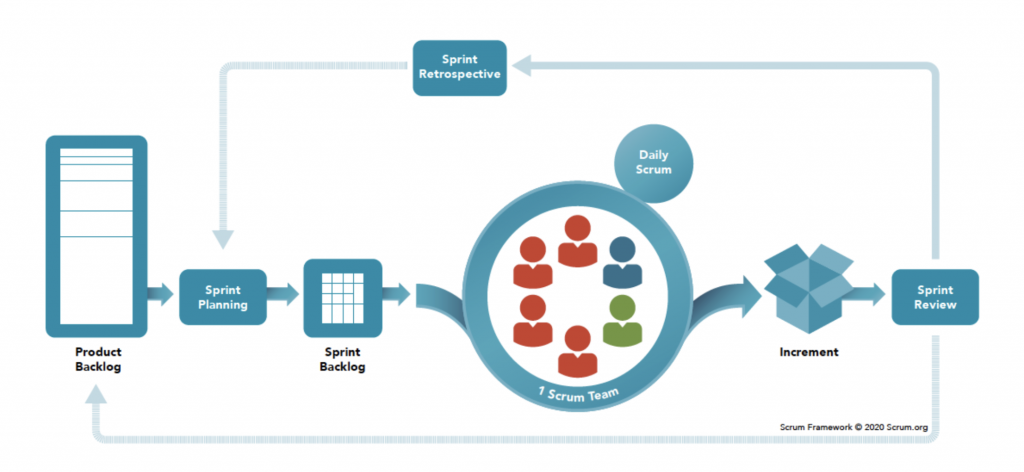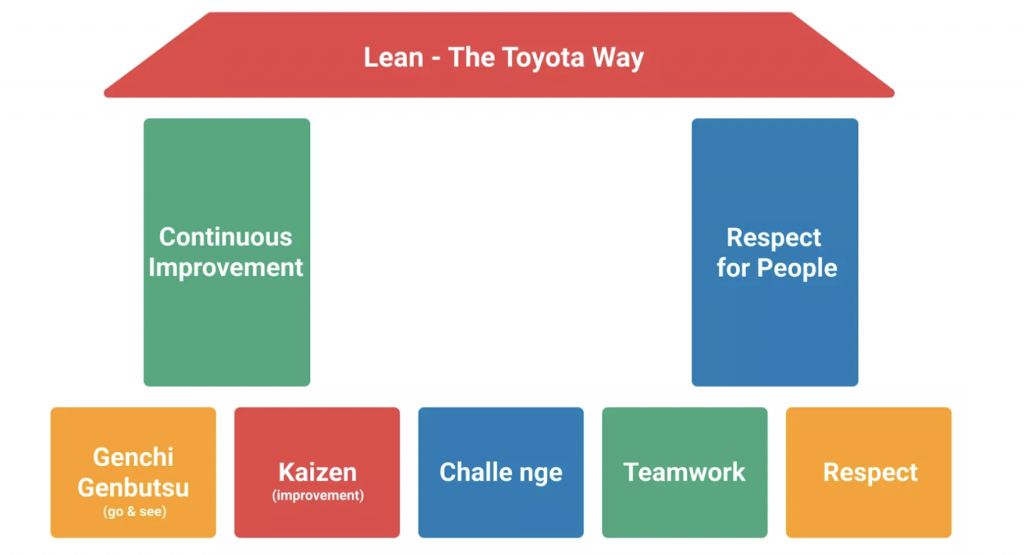Scrum vs. Kanban vs. Lean: Choosing Your Path in Agile Development
|
|
Rise of Agile Methodology
During the early 1990s, the rise of personal computing in businesses brought forth a critical challenge for software development. This challenge, often dubbed “the application development crisis” or “application delivery lag,” was characterized by a significant delay between identifying a validated business requirement and deploying the corresponding application into production. Industry experts estimated that this time gap amounted to approximately three years. The primary factor contributing to this crisis was the prevalent use of the waterfall model in software development, which necessitated strict adherence to each phase of the project without accommodating the rapidly changing technologies and evolving consumer needs of the internet era.
In response to this crisis, in 2001, a group of experienced software developers gathered to brainstorm an alternative approach. Their objective was to replace the waterfall methodology, recognizing its inefficiency in building software that could effectively meet the demands of the Internet age. This collaborative effort resulted in the formulation of twelve principles and a manifesto that laid the foundation for the agile methodology in software development. These agile principles and practices aim to enhance adaptability, responsiveness, and value delivery in the face of evolving technologies and customer requirements.
Agile software development surpasses the confines of specific frameworks like Scrum, Extreme Programming, or Feature-Driven Development (FDD). It extends beyond individual practices such as pair programming, test-driven development, stand-ups, planning sessions, and sprints. Agile software development is an umbrella term encompassing a collection of frameworks and practices that derive their foundation from the values and principles articulated in the Manifesto for Agile Software Development and its 12 underlying principles.
Now let’s compare three popular frameworks used in Agile development – Scrum, Kanban, and Lean – and understand how each one excels.
Scrum

Scrum is a widely adopted agile project management framework that provides teams with a structured approach to organizing and managing their work, guided by a set of values, principles, and practices. It promotes a learning-oriented mindset, empowering teams to self-organize and collaborate in solving problems while fostering a culture of reflection to drive continuous improvement. While Scrum is commonly associated with software development teams, its principles and lessons have broad applicability across various domains of teamwork. This versatility is one of the key factors contributing to the widespread popularity of Scrum. Scrum is founded upon the concept of time-boxed iterations called sprints, which are designed to enhance team efficiency within cyclical development cycles.
The key roles in Scrum include the Product Owner, the Scrum Master, and the Development Team. The artifacts include Product Backlog, Sprint Backlog, and Increment. The key events include Sprint Planning, Daily Scrum, Sprint Review, and Sprint Retrospective. Scrum fosters transparency through visualizations such as sprint boards and burn-down charts. It promotes continuous improvement and adaptability by providing regular opportunities for inspection and adaptation. The iterative nature of Scrum enables incremental development, allowing teams to respond to changing requirements and deliver value in short cycles.
Scrum is ideal for teams preferring a regular rhythm, offering a balanced blend of structure, predictability, and flexibility for user feedback. It is widely embraced in numerous large companies as a prevalent methodology. Additionally, Scrum is advantageous for software development agencies working with clients, ensuring consistent alignment through regular demos and sprint reviews.
Kanban

Kanban is a visual system for managing work as it moves through a process. Kanban visualizes the process (the workflow) and the actual work passing through that process. Kanban aims to identify potential bottlenecks in your approach and fix them so work can flow through it cost-effectively at an optimal speed or throughput. Kanban originated from the manufacturing practices of the Toyota Production System. It provides a framework for managing and optimizing workflow, promoting efficiency, and reducing bottlenecks. Kanban utilizes a visual board, typically divided into columns representing different stages of work, to visualize the flow of tasks or work items. In the Kanban framework, features are shipped and delivered immediately upon completion without adhering to a fixed schedule or predetermined due dates. The core principles of Kanban include Visualize workflow, Limit Work in Progress (WIP), Manage Flow, and Continuous Improvement.
Kanban is well-suited for organizations seeking to embrace the benefits of agility while minimizing drastic workflow changes. It is particularly suitable for projects where priorities frequently shift, and ad hoc tasks can arise anytime. Kanban is a flexible methodology that can be applied to various domains and teams beyond software development. It provides a visual and transparent approach to project management, facilitating collaboration and promoting a steady workflow.
Lean

Lean, or Lean Manufacturing or Lean Thinking, is a methodical approach to managing businesses and improving processes that trace back to the Toyota Production System (TPS). Its core principles revolve around waste elimination, value maximization, and continual efficiency improvement, aiming to deliver top-notch products or services while minimizing costs and lead times. In this context, waste refers to anything that does not contribute value to the final product, whether directly or indirectly. Examples include unnecessary meetings, product features that do not benefit end users, or redundant feedback loops. Any activity that can be eliminated without affecting the desired outcome is considered wasteful in the lean context.
By establishing ongoing feedback loops, review mechanisms, and learning practices, organizations strive to enhance efficiency and become “lean.” The ultimate objective is to provide customers with the most valuable, cost-effective, and competitively priced services that meet their satisfaction. The fundamental principles of Lean include Value, Value Stream, Flow, Pull, and Perfection.
Lean methodology strongly emphasizes market validation and creating successful products that provide value to users. It is particularly well-suited for new product development teams or startups operating in emerging niches where a finished product may not yet exist, and resources are limited. The lean methodology enables these teams to validate their ideas faster and more cost-effectively, supporting iterative cycles of building, testing, and delivering.
Scrum vs Kanban vs Lean
| Scrum | Kanban | Lean | |
|---|---|---|---|
| Ideology | Solve complex problems while delivering valuable products | Use a visual board to improve workflows and processes | Maximize product value to customers by reducing waste |
| Focus | Collaboration, flexibility, iterative development | Workflow visualization, continuous improvement | Waste elimination, value maximization, efficiency improvement |
| Iterative Development | Yes, through time-boxed sprints | No, work is managed continuously | No, it focuses on continuous improvement |
| Workflow Visualization | Limited, focused on current sprint tasks | Comprehensive, visualizes the entire process flow | Comprehensive, visualizes the whole process flow |
| Work Prioritization | Prioritizes work based on the sprint backlog | Flexibility in task prioritization | Prioritizes work based on value and waste reduction |
| Delivery | Iteratively at the end of each sprint | Continuously | Continuously |
| Roles | Defined roles (Product Owner, Scrum Master, Development Team) | No formal or predefined roles | No formal or predefined roles |
| Practices | Sprint planning, sprint, daily scrum, retrospectives | Visualize the flow of work, limit work in progress, implement feedback loops, maintain existing roles and responsibilities | Build quality in, amplify and share knowledge, delay commitment, and deliver quickly |
| Metrics | Team velocity: Amount of work completed in a sprint | Cycle time: Amount of time it takes for a card to move from the first column to the last column | Lead time: Time between receiving feedback and implementing it |
| Continuous Improvement | Through retrospectives and sprint reviews | Continuous improvement based on real-time feedback | Continuous improvement based on waste elimination |
| Flexibility | Provides structure and predictability while allowing for adjustments based on user feedback. | Offers flexibility in task prioritization, allowing ad hoc tasks and dynamic changes. | Promotes flexibility by adapting to changing needs and fostering continuous improvement. |
| Customer Focus | Delivers value through user stories | emphasizing customer value throughout the process | Prioritizes customer value as a top consideration |
| Adaptability | Can adapt to changing requirements during sprints | Can easily accommodate changing priorities and ad hoc tasks | Continuous improvement allows for adaptation |
| Suitable For | Teams following a regular rhythm, software development projects. | Environments with changing priorities and projects with unpredictable workloads. | New product development, startups, and teams aiming for market validation and efficiency. |
testRigor
Whether it’s Scrum, Kanban, or Lean, time management takes precedence. Therefore, enhancing both speed and efficiency of the software development process becomes a significant concern.
In terms of test automation, testRigor plays a vital role in saving a substantial amount of time through various means:
- testRigor’s unique feature, the Generative AI engine, allows QA professionals to create entire automated tests based on test case titles. This eliminates the need for programming languages and empowers manual testers to automate tests 15 times faster while spending 99.5% less time on maintenance.
- No need to create duplicate test scripts for different platforms. The same script can be executed seamlessly across various platforms and browsers, requiring minimal configuration changes.
- testRigor supports multiple testing types, including mobile browsers, web browsers, mobile apps, desktop apps, API, and more.
In other words, the AI-based testRigor test automation tool, armed with Generative AI, is the most advanced and straightforward way to cover your software applications with end-to-end UI tests.
Conclusion
In this comparison post between the Scrum, Kanban, and Lean agile software development methodology frameworks, it’s important to note that no method is superior to the others. Each framework has its advantages and disadvantages, and they can even complement each other. Many teams nowadays adopt a hybrid approach, combining two or all three frameworks simultaneously. Finding what works best for your team and adapting the system is crucial.











